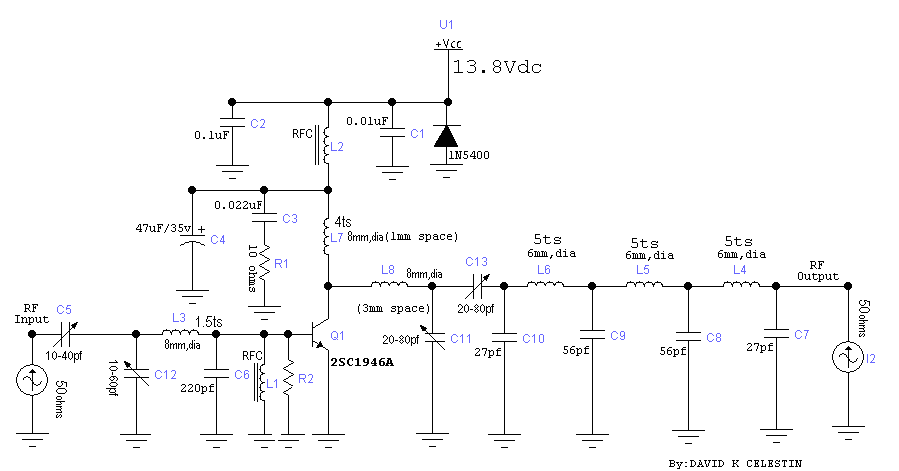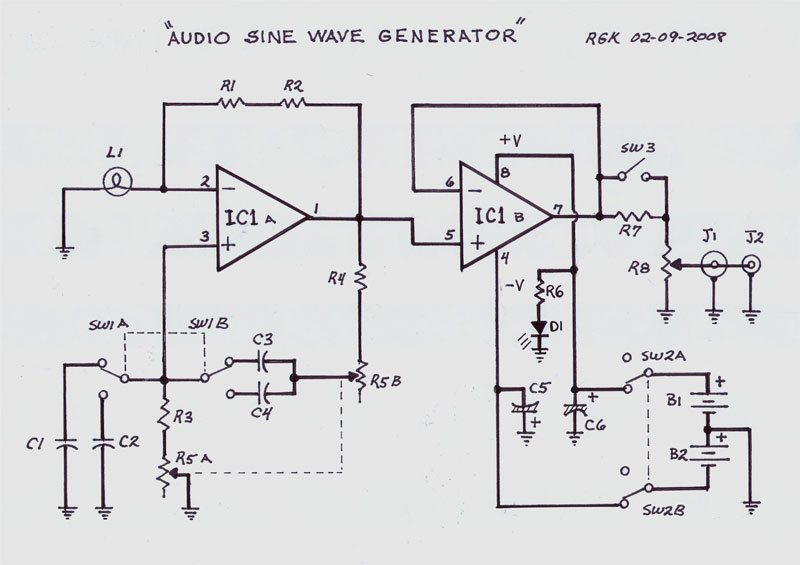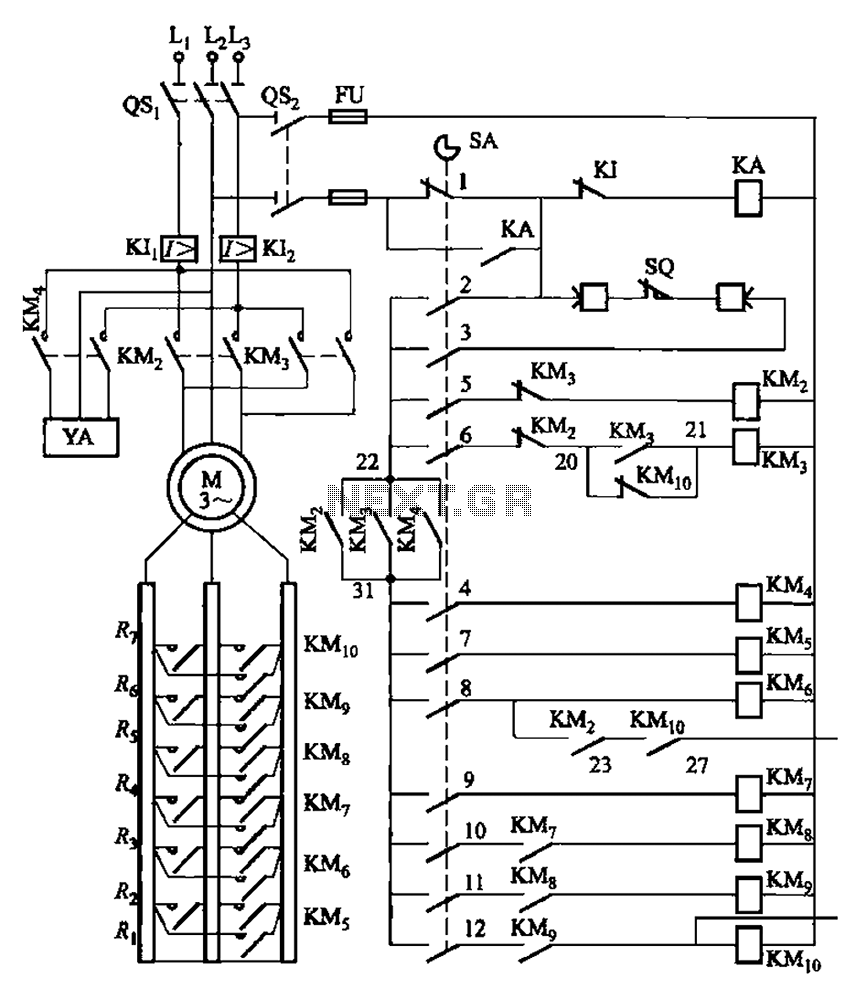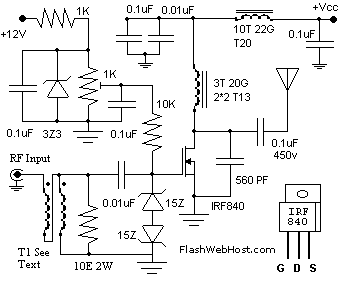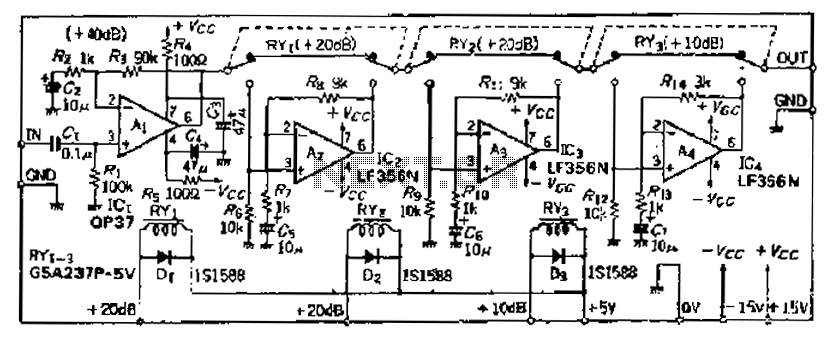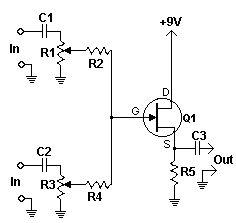
MD1 audio w/ mCD & 32x buffer amp circuit
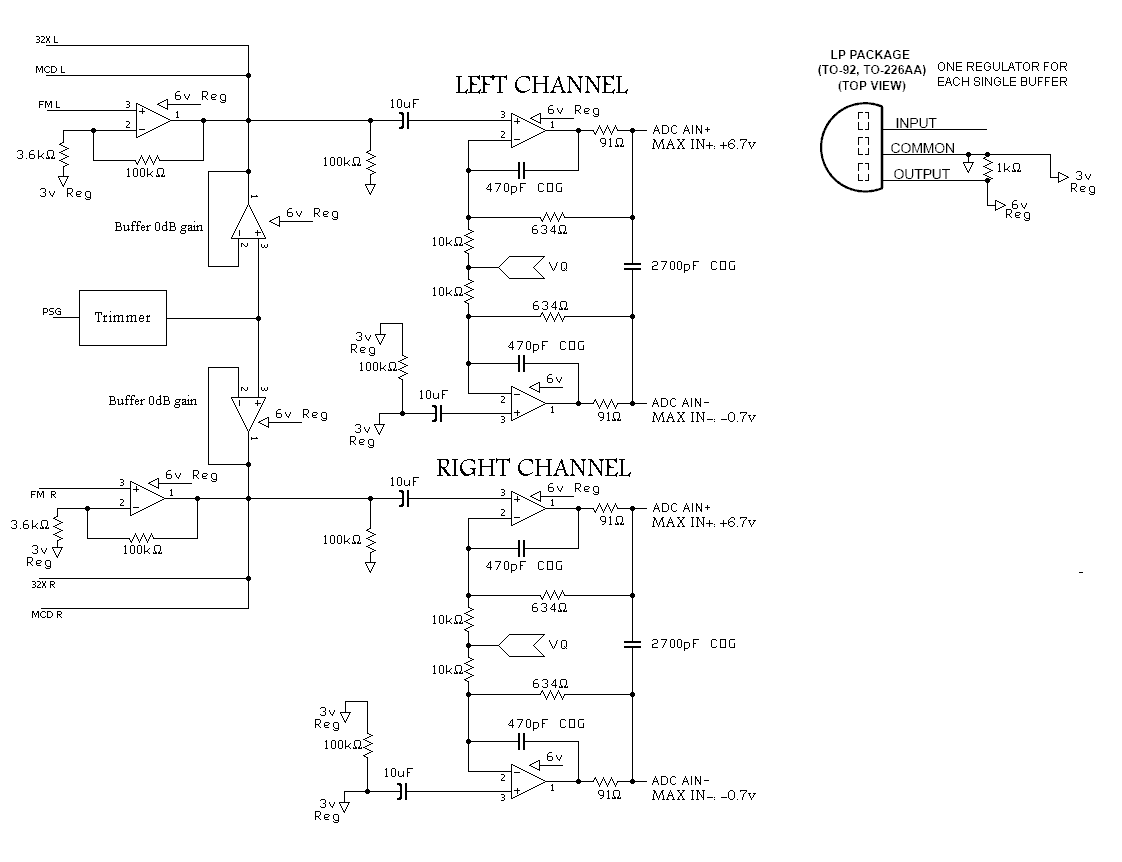
A program is needed to set the channels to their maximum level or to write the full scale to the Digital-to-Analog Converter (DAC). The MD schematics indicate that the audio signals are mixed with ratios of 0.0431 for the Programmable Sound Generator (PSG), 1 for the Yamaha (YM), and 0.0468 for external audio sources (both 32x and CD). Modifications to the audio amplifier involved tapping all signals before they pass through the electrolytic capacitors, which were removed along with subsequent components such as resistors and the Sony amplifier. The YM outputs were amplified by a factor of 28 and mixed with the unamplified PSG and external audio, with a trimmer available to adjust the PSG level. Regarding ADC filtering, a first-order low-pass filter at 61 kHz is sufficient, providing 40 dB attenuation for the 6.1 MHz replica. This results in a maximum of 7 mV for spectral components around 6.1 MHz (+/- 61 kHz), excluding noise. The system is powered by a linear 6-Volt regulator (7806), isolated from the MegaDrive logic and analog supplies, drawing approximately 30-40 mA of current. A different approach is suggested for the PSG, utilizing separate operational amplifiers to feed each channel individually, even though they share the same input, to minimize cross-signaling between audio channels. Additionally, there are control bits and signal inversion considerations within the protocol, necessitating signal processing between the ADC output and the SPDIF connector.
The described setup involves a multi-channel audio signal processing system, where precise control over audio levels and signal integrity is crucial. The DAC operates at full scale to ensure optimal audio output, with specific attention to the mixing ratios of various audio sources. The use of operational amplifiers for each audio channel is a strategic enhancement that mitigates interference, thereby improving audio clarity and separation.
The first-order low-pass filter implemented at 61 kHz is designed to attenuate high-frequency noise effectively, ensuring that only the desired audio frequencies pass through to the output. This filter's design is critical, as it directly influences the quality of the audio signal by reducing unwanted spectral components that could distort the sound.
Power management is achieved through a dedicated linear regulator, the 7806, which stabilizes the voltage supply to the audio circuitry. This isolation from the MegaDrive's logic and analog supplies is vital for preventing noise from the digital components from affecting the audio performance, thus maintaining the integrity of the audio signals.
In terms of protocol handling, the presence of control bits and potential signal inversion indicates a need for careful signal processing. This step is important for ensuring compatibility between the ADC outputs and the SPDIF connector, which is commonly used for transmitting digital audio signals. The implementation of these processes and components collectively enhances the overall audio performance of the system while addressing the challenges of cross-talk and signal integrity.Need some program to set it`s channels to the maximum level, or write the full scale to the DAC. Looking at the MD schematics, you`ll see that the audio is mixed together with relations of 0. 0431 for the PSG, 1 for the YM and 0. 0468 for the external audio sources (both 32x and CD) What I did with my audio amp was tapping all signals before going through the electrolithic capacitors (and removing those caps, and everything after them, resistors, the sony amp, everything), Amp`ed the YM outputs by 28, and mixed them with the straight PSG and Ext audio, "without" amplification (actually there`s a trimmer to adjust the PSG level About the ADC filtering, a first-order low pass filter at 61kHz should be enough. It will give you 40dB attenuation for the 6. 1Mhz replica. This means that the spectral components around 6. 1Mhz (+/- 61kHz) will have a maximum of 7mV (ignoring noises and crap) They were powered by a linear 6Volt regulator (7806), completely separated from the MegaDrive logic and analog supplies, and draws about 30-40mA of current.
Now I would do something different regarding the PSG: I would use separated opamps to fead each channel separately, even though their input would be the same: this reduces cross-signaling between audio channels. Oh yes there`s more stuff like control bits and bit inversion crap in this protocol. This means you have to do some signal processing between the ADC output and the SPDIF connector. 🔗 External reference
The described setup involves a multi-channel audio signal processing system, where precise control over audio levels and signal integrity is crucial. The DAC operates at full scale to ensure optimal audio output, with specific attention to the mixing ratios of various audio sources. The use of operational amplifiers for each audio channel is a strategic enhancement that mitigates interference, thereby improving audio clarity and separation.
The first-order low-pass filter implemented at 61 kHz is designed to attenuate high-frequency noise effectively, ensuring that only the desired audio frequencies pass through to the output. This filter's design is critical, as it directly influences the quality of the audio signal by reducing unwanted spectral components that could distort the sound.
Power management is achieved through a dedicated linear regulator, the 7806, which stabilizes the voltage supply to the audio circuitry. This isolation from the MegaDrive's logic and analog supplies is vital for preventing noise from the digital components from affecting the audio performance, thus maintaining the integrity of the audio signals.
In terms of protocol handling, the presence of control bits and potential signal inversion indicates a need for careful signal processing. This step is important for ensuring compatibility between the ADC outputs and the SPDIF connector, which is commonly used for transmitting digital audio signals. The implementation of these processes and components collectively enhances the overall audio performance of the system while addressing the challenges of cross-talk and signal integrity.Need some program to set it`s channels to the maximum level, or write the full scale to the DAC. Looking at the MD schematics, you`ll see that the audio is mixed together with relations of 0. 0431 for the PSG, 1 for the YM and 0. 0468 for the external audio sources (both 32x and CD) What I did with my audio amp was tapping all signals before going through the electrolithic capacitors (and removing those caps, and everything after them, resistors, the sony amp, everything), Amp`ed the YM outputs by 28, and mixed them with the straight PSG and Ext audio, "without" amplification (actually there`s a trimmer to adjust the PSG level About the ADC filtering, a first-order low pass filter at 61kHz should be enough. It will give you 40dB attenuation for the 6. 1Mhz replica. This means that the spectral components around 6. 1Mhz (+/- 61kHz) will have a maximum of 7mV (ignoring noises and crap) They were powered by a linear 6Volt regulator (7806), completely separated from the MegaDrive logic and analog supplies, and draws about 30-40mA of current.
Now I would do something different regarding the PSG: I would use separated opamps to fead each channel separately, even though their input would be the same: this reduces cross-signaling between audio channels. Oh yes there`s more stuff like control bits and bit inversion crap in this protocol. This means you have to do some signal processing between the ADC output and the SPDIF connector. 🔗 External reference
